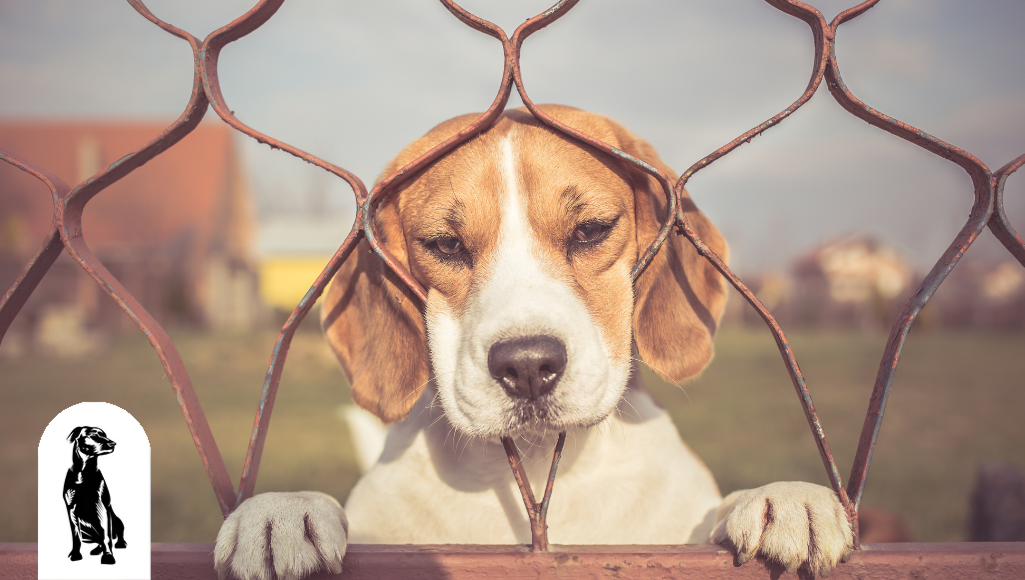
With summer in full swing, it’s probably a good time to talk about dog anxiety. Dogs can experience anxiety in many similar ways to humans, and summer is full of many changes and situations that could trigger anxiety for your dog.
Most dogs will experience anxiety at some point throughout their life. However, the anxiety is usually only temporary with proper care and attention. Part of that proper care is understanding what can cause anxiety for dogs.
Each dog is different. Depending on the breed, age, experiences, and many other factors, dogs will respond to stimuli differently. Recognizing what stimuli and situations can trigger anxiety is the first step in helping your anxious dog live a happier life and prevent normal anxiety from developing into a chronic anxiety disorder.
These are four of the most common causes of dog anxiety.
New or strange environments
It’s your first day at a new job, and you walk in only to realize you have no idea where to go, who to talk to, or what to do.
How do you feel?
Stressed, worried, on-edge?
What do you do?
Pace, look around to find someone or something familiar, a nervous tic?
We’ve all felt anxiety in new or strange situations and environments. So it makes sense that dogs would have those same reactions, right? A lot of the same behaviors can be seen in dogs experiencing anxiety. These signs may indicate your dog has some anxiety:
- Restlessness
- Excessive barking
- Pacing or constantly picking up paws
- Drooling
- Panting
There are more extreme signs to look for that could lead to injury to your pet or damage to your home:
- HeightenedAggression
- Urinating in the house even when housetrained
- Increased chewing or destruction
These behaviors are understandable if your pet is in an unfamiliar environment. The good news is that there are many approaches to treat dog anxiety that we will get to later in this article.
As a dog owner, it can be helpful to anticipate your dog’s anxiety when introducing them to new places. Once you become more aware of your dog’s behaviors and sensitivities to certain environments and situations, it can be easier to help them navigate their anxiety and get back to their usual behaviors.
Separation
The first day my daughter went to all-day Kindergarten, I was a nervous wreck the entire day. I knew she would be fine and probably have a great time. I knew I would be fine, but that didn’t stop me from worrying until she got off the bus and back home.
Separation anxiety is fairly common in dogs, and dogs notice behavior patterns. Suppose you always grab your keys from the counter, set the alarm, and pick up your bag by the coffee table as you head to the door. In that case, your dog may associate any (or a combination) of these actions with you leaving and start to show signs of anxiety, like the ones listed above.
One approach to separation anxiety is to get a second dog to be a buddy and companion. While this can be helpful, there are some things to consider before making this change. If you are asking yourself whether or not you should get a 2nd dog, take the time to research before adopting a new furry family member.
Another possible way to combat your dog's separation anxiety is to use counterconditioning. This training method helps your dog associate you leaving with something positive. The goal is to replace the negative associations and behaviors your dog has connected to you, leaving with positive ones. This process takes time and consistent effort but has proven to be very effective in treating dog anxiety.
Fear
The dentist, deep water, clowns, tight spaces. These are all common human fears, and fear is not always rational. Even when it is, our reactions may not match the intensity of the stimuli. We may jump when someone calmly turns the corner in front of us or stress for days over a quick cleaning at the dentist.
According to the Merck Veterinary Manual, it is not unusual for your dog to have a variety of fears. Some prevalent examples include fear of
- An unfamiliar dog or a group of dogs
- Loud noises like construction work, alarms, and fireworks
- Specific situations like visiting the vet or groomer
- Even particular inanimate objects like umbrellas or hats
In circumstances of dog anxiety caused by fear, counterconditioning and other training methods are essential, but there are times when medication or natural remedies can be helpful additions. Regular exercise can significantly affect the mental health of your dos, as well as maintaining good nutrition.
If you have any questions or concerns about your dog’s health—including mental and emotional well-being—be sure to contact your veterinarian. They can offer the proper care and instructions to maintain your dog’s health.
Aging
As they age, some dogs may develop anxiety in response to stimuli that might not have been a problem before. Senior dogs may be more hesitant to interact with new people or become more sensitive to loud noises or environmental changes.
This is a natural process, albeit sometimes difficult to manage as a dog owner. Dog anxiety can be exacerbated by Cognitive Dysfunction Syndrome, which can be seen in some senior dogs. A veterinarian can better assess and offer treatments in these situations.
Help Prevent Dog Anxiety by using Plush Paw Products
Whether you are taking your dog camping, having a large group of people over for a barbecue, or going on a well-deserved vacation without your furry friend, remember to check in with your dog and keep an eye out for signs of anxiety.
To find the best products to safely care for your dog when traveling, check out Plush Paws Products. They offer a variety of best-selling car seat covers that will protect both your dog and your car while off on any adventure this summer. Plush Paws Products are made from premium materials, easy to clean, and feature easy seat belt access for any human passengers who might want to tag along.
